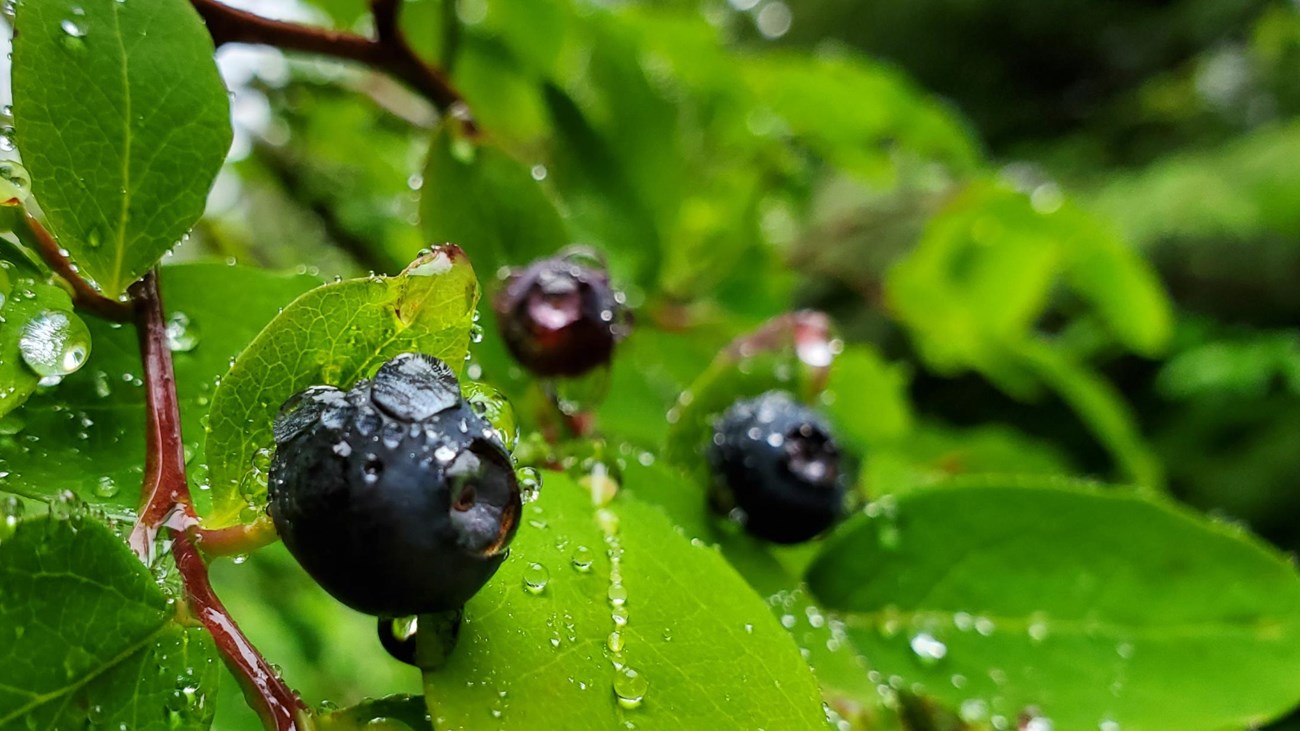Last updated: February 6, 2023
Thing to Do
Go Berrying

NPS Photo
Berries provide bright splashes of color against Sitka's greenery in mid- and late summer. Please be respectful when enjoying berries inside the park. According to the Kayaaní Commission's Ethnobotany Field Guide, most Tlingit people do not harvest within the park out of respect for loss of life during the battle that was fought here.
Salmonberries, huckleberries, blueberries, and currants, are common. Each has a different shape and texture. Some, including blueberries, are coated in a cloudy, waxy "bloom" that protects them from bacteria. All are an important source of food for birds, bears, and—with caution—people.
Look for berries of all colors, shapes, and sizes along park trails. Notice which types live where and try to guess what conditions they like. Search for animals among them or evidence that animals have been eating them. Be alert, especially since bears enjoy berries! Try to figure out long it takes to go from flower to ripe fruit based on the different stages you can identify.
Pets are allowed on trails that start at the visitor center, but not indoors. You must keep your pet on a leash that is no more than six feet long and dispose of your pet's waste in a trash can. When bears are active, they may perceive your pet as a threat; it is best to leave your pet at home when bear activity is high so that you are able to focus on bear and human safety.
Find operating hours and seasons on the park website.
Two accessible parking spaces are available in the visitor center parking lot. A paved trail with curb cuts leads to the visitor center from downtown Sitka. Accessible restrooms, a lowered water fountain, and an extended picnic table are available outside the visitor center. The trail is generally six feet wide, relatively flat, and paved with crushed gravel.
